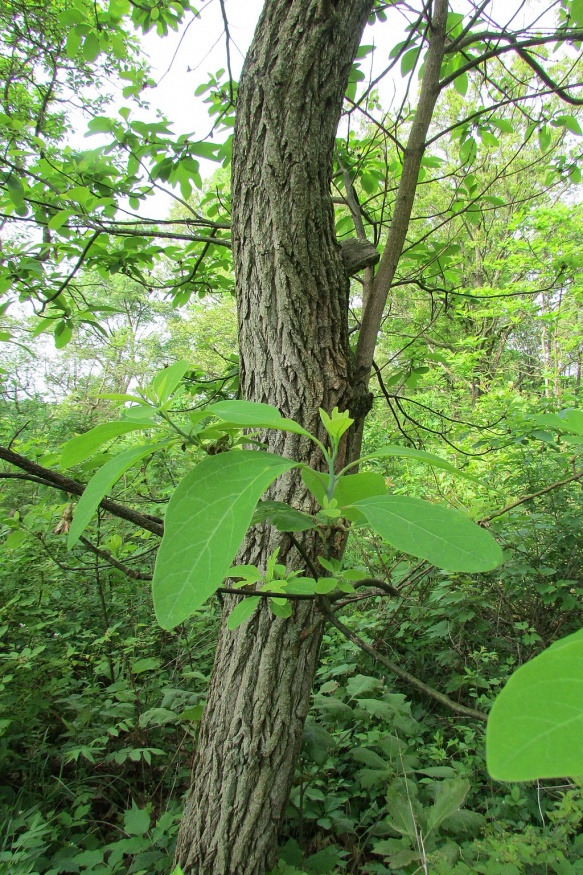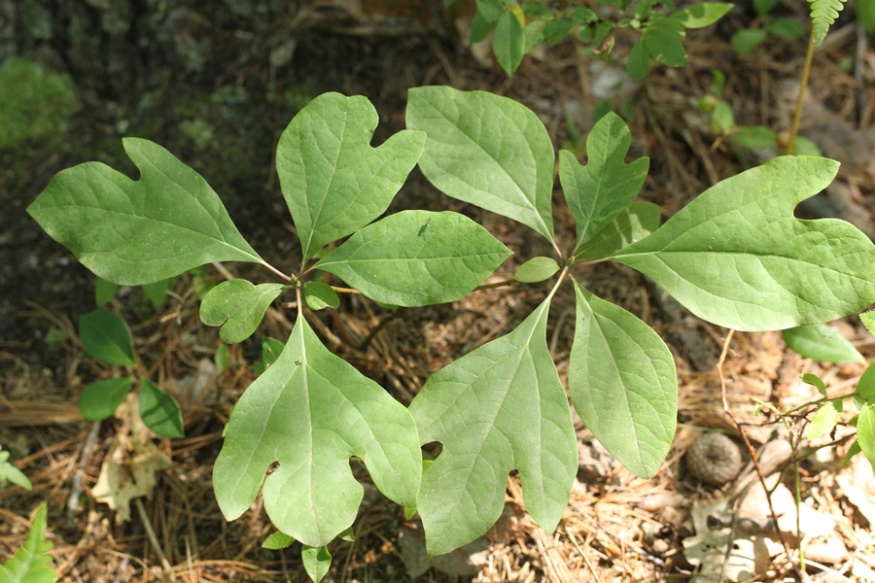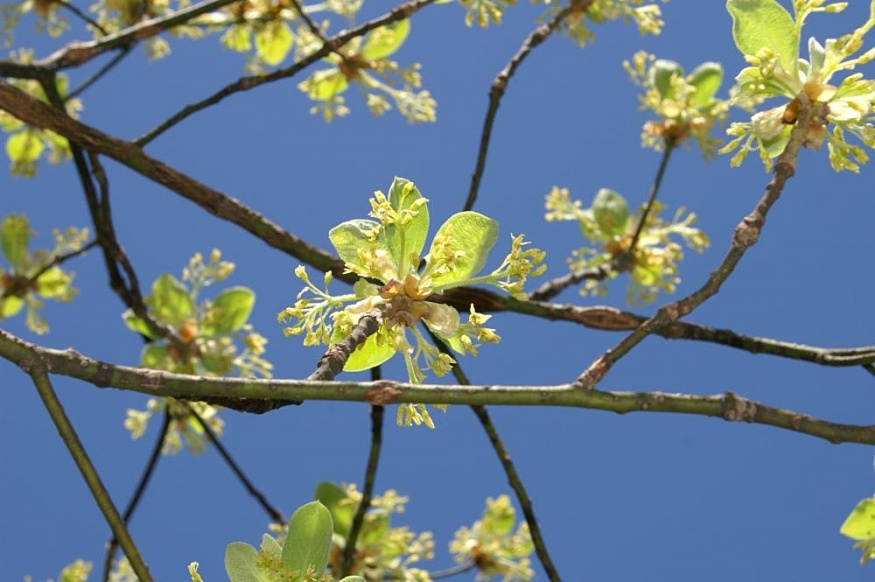Sassafras

Family: Lauraceae Native to: Eastern North America
Hardy to zone: 4
Shapes: round, irregular, clump
Height: 30-65ft
width: 25-40ft
Growth rate: fast
Unique attractions: fall colour, leaves
Tolerances: salt
Common uses: landscaping, cityscape, specimen
Soil: moist and fertile, well drained, drought tolerant, acid ph, dry
Sassafras is known for its unique leaf shape, aromatic scent, and nice fall colour. The tree often forms colonies when found but is rare in Canada and scattered in distribution. Interestingly, it can be trained as a single stemmed tree or dense thicket depending on pruning strategies. The tree's natural form ranges from rounded to irregular. Sassafras albidum is the only species for its genus native to North America.
Uniquely shaped leaves of the tree resemble mittens. Four potential shape variations occur on the same tree: a right handed mitten, left handed mitten, one with three lobes, and a plain oval. Leaves turn to an attractive yellow, orange, red, scarlet, or purple colour in autumn. The bark is orange-brown with deep furrows and soft corky ridges developing when mature. Leaves, bark, and any other parts of the plant release a Spicy odor when bruised.

Clusters of Small yellow flowers appear in early spring, a cycle which only starts after 10 years of age. Dark blue fruit on a red stalk follow, ripening in the fall. The fruit are a favorite for birds, also eaten by squirrels, deer, and black bears.

Sassafras root was one of the original ingredients in 'root beer'. Both roots and bark were also once used medicinally as a tonic but seldom currently. Its unique appearance and flexibility make sassafras a good choice for the landscape. This includes the ability to adapt to different soil types and light conditions. The tree has some tolerance to drought and salt but is intolerant of urban pollution.
References
Arbor Day Foundation. (n.d.). Sassafras. Retrieved from https://www.arborday.org/trees/treeguide/TreeDetail.cfm?ItemID=917
Connon Nurseries. (n.d.). Sassafras. Retrieved from https://plants.connon.ca/11100004/Plant/440/Sassafras
Farrar, J.L. (2018). Trees in Canada. Ottawa, ON: Natural Resources Canada.
Tree Atlas - Ontario. (2020). Sassafras. Retrieved from https://www.ontario.ca/page/sassafras
University of Guelph Arboretum. (n.d.). Sassafras - Sassafras albidum. Retrieved from https://www.uoguelph.ca/arboretum/thingstosee/trees/sassafras